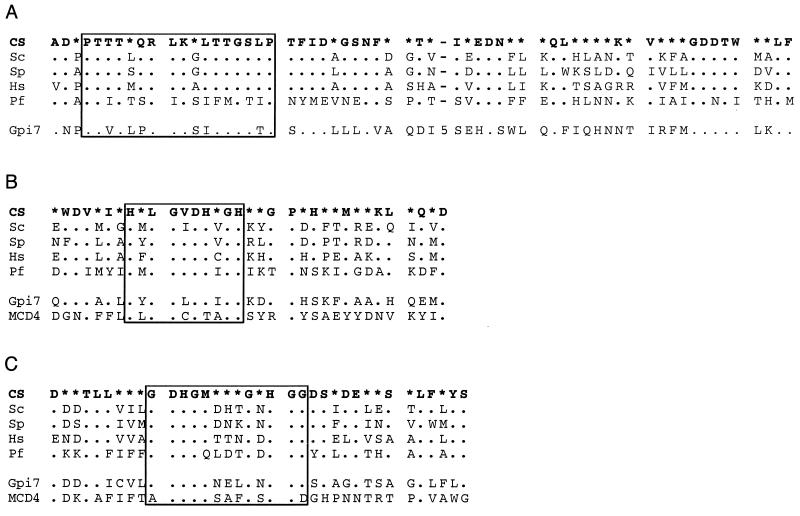FIG. 7.
Sequence motifs in the GPI phosphoesterases. The species used are H. sapiens (Hs), S. cerevisiae (Sc), S. pombe (Sp), and P. falciparum (Pf). The sequences of yeast Gpi7 (CAA89353) and MCD4 (NP_012756) were added to compare regions that are common to all GPI phosphoesterases. MCD4 aligns poorly with the first block and is omitted there. (A) A region of strong homology between the phosphoesterases of the PIG-O family. The box highlights a PTX[ST]X8TGX2P motif present in many alkaline phosphatases. The plasmodial sequence deviates more from the consensus, but most of its substitutions are conservative. The number 5 represents an insertion of five residues in Gpi7. (B) The second block includes the boxed decamer motif HXLGXDHXGH that is also present in many peroxidases. (C) The third block is specific for the GPI phosphoesterases (see text) and may contact the GPI substrate. Accession numbers are AAC07985 (Hs), BAA21454 (Sp), and NP_013069 (Sc). CS, consensus sequence. Symbols and figure preparation are as described in the legend to Fig. 3.

